Appearing on the high end Hi-Fi market in 2011 with its Canto system, the brand Soledge Audio was created with Raphaël Bini, an electronic engineer and music lover who wanted to do away with wires.
This is how the Canto system was born, with the Maestro music server at its core, a device with a unique design that uses exclusive technologies.
In fact, the Maestro server can communicate with receivers with a Tenor amplifier, thanks to its power line technology (CPL). The server adorned with several characteristics specific to Soledge, such as its synchronisation between its right and left tracks when you use a channel amplifier in the bridged mode.
Soledge has now reappeared with its Alto network player, which has benefited from the experience acquired by the manufacturer thanks to its Canto system. The player can read High Definition audio files in numerous formats, whether via a wired connection through its RJ45 input, or through its integrated online power line system (CPL). The device is also compatible with AirPlay, although this limits the files to 16-bit at 44.1kHz. The Alto network player, which can also be used in a multi-room configuration, integrates its own DAC, which can be used off line via its S/PDIF coaxial and optical inputs. It also contains configurable audio outputs, which we will discuss later. We now invite you to read our benchmark on the Soledge Audio network player.
About Soledge Audio
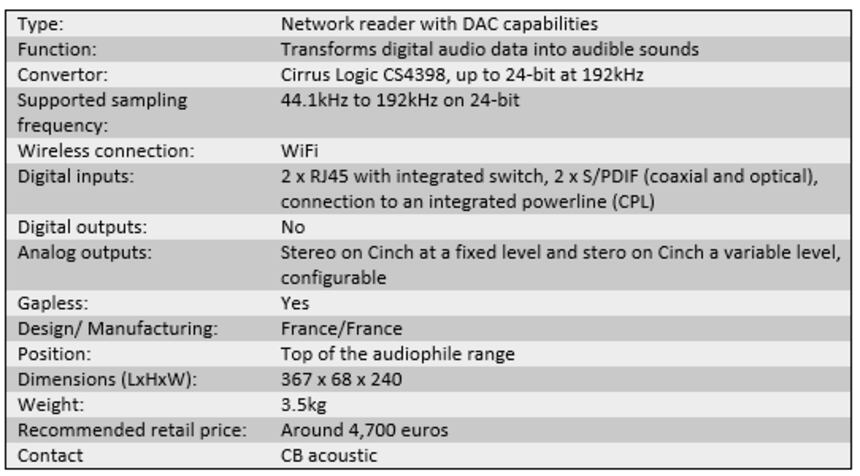
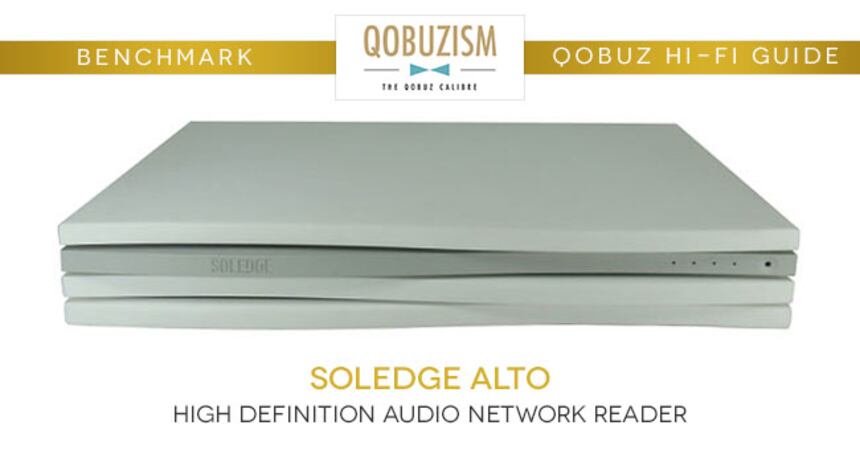
Appearance
The Soledge Alto is a well-designed design with striking and successful aesthetics. Its top and side panels (except for a row of anodised aluminium) is made of Corian, a modern material combining longevity and design. Its colour (white is the standard version) can be personalised on request by the buyer.

Four little LED lights flash when you turn on the device, and then indicate the source being used. These are found on the upper right part of the frame, where you can exert pressure to change the source. You can also see the receptor window for the remote control.
Connectivity
On the back of the Soledge Alto there are two RJ45 sockets, to which you can connect a network cable at the same time, as the device contains an internal Ethernet switch. In the absence of an Ethernet network you can also directly attach an NAS server to one of the sockets.
Next to the RJ45 connectors there is a USB A socket, which enables you to update the firmware. However the coaxial S/PDIF socket and another optical socket give you the possibility to attach two digital sources containing appropriate outputs.

A coding wheel labelled Room enables you to assign a different number to each device when you are using multiple devices in the multi-room mode.
The audio is available in the asymmetric mode on two pairs of Cinch outputs, one delivering signals at a fixed level, the other delivering signals at a variable level. You can adjust these with the monitoring application.
The four outputs can be configured following the table below. It is intended that you use the outputs in multi-channel, thanks to the second coding wheel marked Channel.
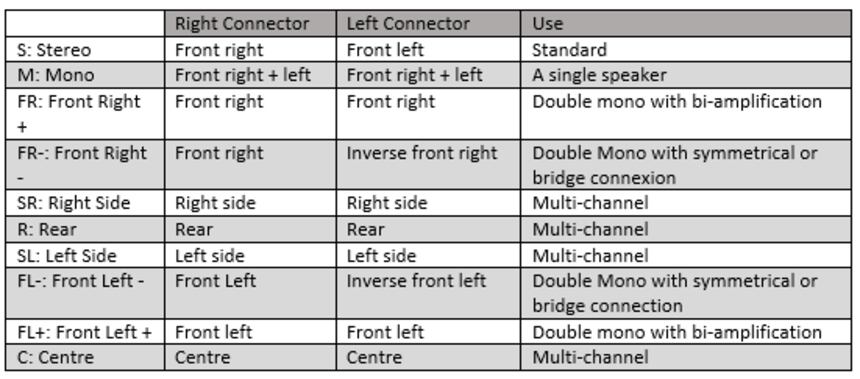
Manufacturing
You can?t help but commend the manufacturing of the Soledge Alto, with its solid frame made of a bent and welded steel sheet (something we had never seen before), coated with a grainy charcoal paint. Its three cards are excellently inserted, and its many coiled toroidal transformer gives it a total independence from the power supply, thus ensuring an absence of interference between the two.

In the image below you can see the serious filtration of the mains voltage by four coils, a film capacitor, and the presence of an upstream protection varistor, whose components are used to recover the desired signal when you use the Alto with the brand?s power line system (CPL).
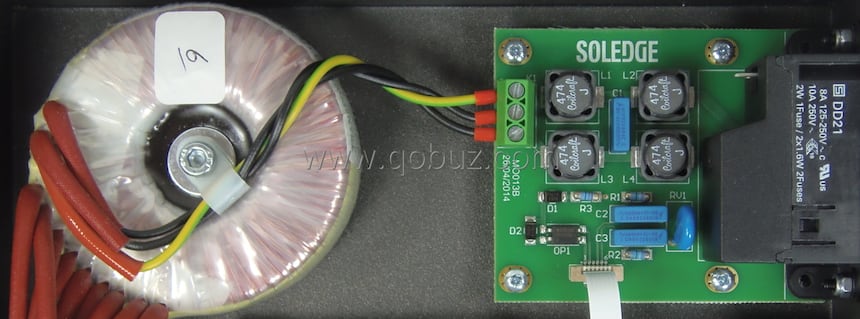
In the image above you can see the network card, and in the upper left part, the card?s various necessary power feeds created by the independent coils coming from the power feed transformer.
You can also see a +5V LM2940 regulator, and two LM117 adjustable regulators, as well as an electrochemical capacitor of 1000?F/25V and two of 4700?F/16V for the filtration of recovered secondary voltages.
A Micrel MIC5295 adjustable regulator is used to feed the CPL interface, the little circuit mounted on right angles marked K3, where you can also see the isolation transformer (TR3). The MIC5295 contains a pin that enables you to turn off the regulator, so that you don?t use up power unnecessarily if the Alto is working via its Ethernet RJ45 connection. A very ecological feature.
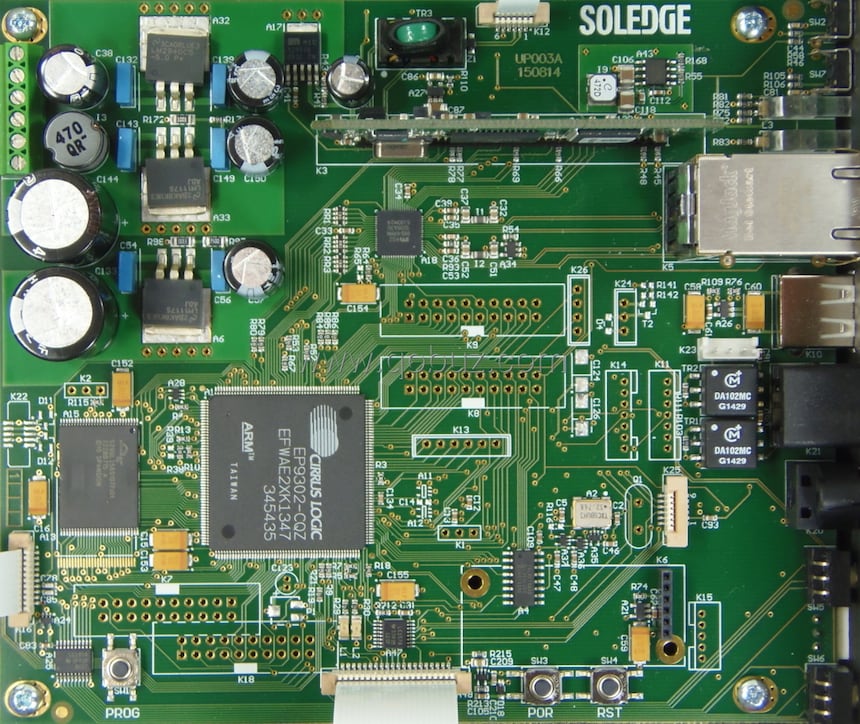
The interface with the network and the CPL card is carried out by a Micrel KSZ8864 switch (a small integrated circuit situated on the right of the power feed). The signals are then taken on by a powerful Cirrus Logic EP9302 processor with an ARM9 core.
The I2S signals, extracted by the EP9302 processor, are then directed towards the digital analog conversion card, across a 74LC157 multiplexer (switch). This also manages the I2S bus extract from the S/PDIF inputs, by a Cirrus Logic CS8416 receptor (24 bits à 192 kHz), which is found on the other face of the card.
On the conversion card you can immediately find a Cirrus Logic CS8421 sampling rate convertor, the manufacturer?s new chip that recalculates all the digital signals entering on 24-bit at 192kHz, but which are currently being ?bypassed?(the digital signals are kept in their original format). This sampling rate conversion could be activated by the monitoring application that Soledge will make available for Alto owners in the future.
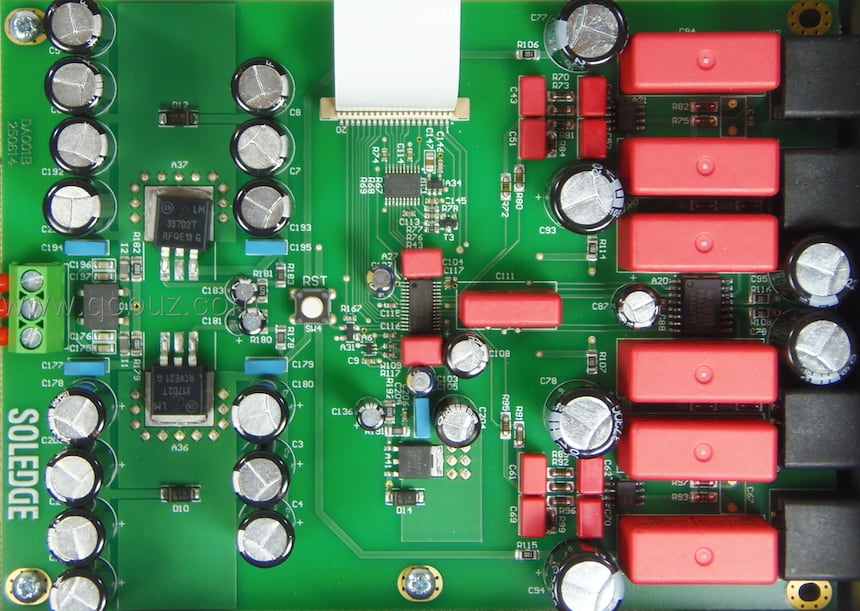
There is also another Cirrus Logic chip, coming from a CS4398 (a top of the range model from the manufacturer, at 24-bit at 192kHz, DSD and pure DSD compatible), which takes care of the digital analog conversion.
The outputs with a differential voltage are then added up by an operational amplifier (whose marking has been deleted), which is also used for filtration. The signals are then sent via the Cinch socket with a fixed working level of 47? towards the PGA2320 (Burr-Brown) circuit that adjusts the volume, which is connected to the variable level outputs.
You should also note that the signals do not cross a condenser (risking neither staining nor a phase shift), and it is by programming the CS4398 convertor that Soledge configures the audio outputs.
The symmetrical power supplies from the operational amplifiers are ensured by the LM317 and LM337 low noise adjustable regulators. They are both linked to three electrochemical condensers of 1000?F/25V. These power supplies are then split apart at the last moment to power their own elements, by the polypropylene film capacitors of 1.5?F from the brand Wima, a leading player in this field.
The device uses an adjustable LT1117 regulator, which provides the +5V to the analog part from the CS4398 chip.
Use, listening
Soledge has not developed its own UPnP monitoring application, instead leaving the owner of an Alto to choose the application of their choice. For example you can use mconnect free for iPad (used by Soledge itself), or even the application Kinsky by Linn, which is also suitable.
Raphaël Bini is a devoted music lover, and has refined the listening to the choice of several of Alto?s components, leaving no doubt that the sound performance of this device is simply excellent.
The airy sound restitution offers a rare gracefulness, where you can easily distinguish all the instrumental parts when listening to the album Vespri per Assunzione di Maria Vergie by Vivaldi, from the director and group that we hold very dear: Rinaldo Alessandrini and the Concerto Italiano.
We also highly enjoyed the Cantique de Noël, an extract from the beautiful album A Winter?s Light, where the sweetness of the music is only emphasized by the fluidity and luminosity of the Soledge Alto?s sound restitution.
The sound restitution is very clean, airy, with very clear musical parts and a punchy bass in the song Christine from the album Chaleur Humaine by Christine and The Queens.
When listening to Dangerous from the album Listen by David Guetta, we unconsciously raised the volume, which is a sign that we wanted to be completely surrounded by the music, and not lose a single crumb of the diverse and various sounds, which the Soledge Alto superbly transcribes.
We listened to these songs using a fixed level via the Triangle Antal EZ headphones and speakers. We then proceeded to listen via the variable level output, as the signal crossing the volume adjuster?s integrated circuit strongly impacts the sound quality. But how would it happen with the Solege Alto?
But rest assured, by instantly switching the signals at a fixed and variable level, (having taken care to equalise the levels), across a Heada amplifier for headphones by Aurasound, which we will soon present to you in a benchmark, the difference in sound quality is rather subtle.
In this way, listening back to the extracts from the album Vespri per l'Assunzione di Maria Vergine by Vivaldi, we slightly noticed that the fluidity in volume of the soloists and choirs stays at a very good level.
In conclusion, it is truly amazing to see a (little) French manufacturer create a network player of this calibre with first class sound results. Bravo, and a Qobuzism to you!
Contact (CB acoustic, distributor)
Reading capabilities
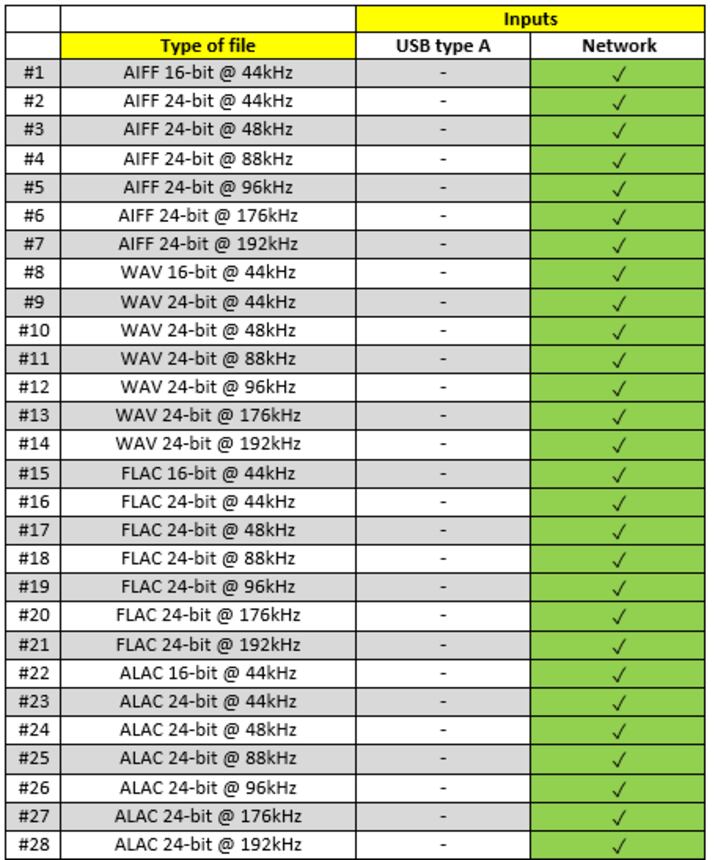
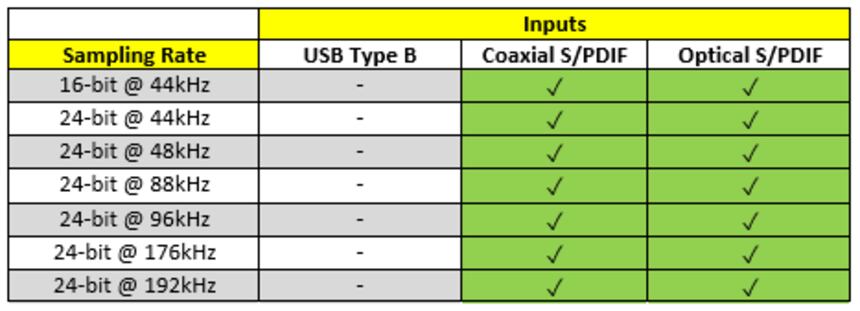
If you are a manufacturer, importer, distributor or actor in the domain of sound reproduction and you wish to contact us, please do so using the following address: newstech@qobuz.com
If you are passionate about our Hi-Fi Guide and you wish to contact us, please do so using the following address: rubriquehifi@qobuz.com


